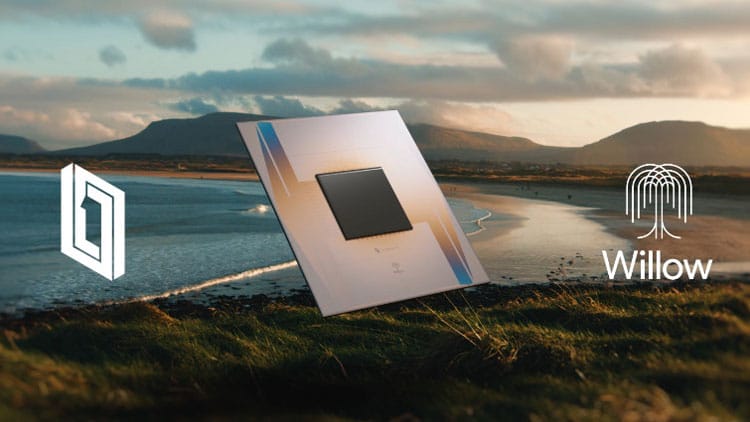Google Quantum AI has unveiled its latest quantum computing marvel: the Willow chip. This state-of-the-art innovation marks a significant leap toward scalable, practical quantum computing, with breakthroughs in error correction and computational performance reshaping the quantum landscape.
Willow’s Revolutionary Achievements

1. Tackling Quantum Errors at Scale
Quantum computers have long struggled with errors due to qubits’ fragility—they quickly lose information through interactions with their environment. Willow addresses this issue head-on by implementing a groundbreaking method of quantum error correction.
- For the first time, Willow demonstrates that adding more qubits reduces error exponentially, a milestone referred to in the field as going “below threshold.”
- This development ensures computations remain reliable as systems scale up, paving the way for more complex and commercially relevant quantum applications.
2. Performance Beyond Imagination

Willow achieved a staggering feat: it completed a computational benchmark in under five minutes that would take one of today’s fastest classical supercomputers 10 septillion years. To put that into perspective, this time frame vastly exceeds the universe’s age.
- Using a random circuit sampling (RCS) test, Willow demonstrated an unprecedented level of computational complexity that classical machines cannot match.
- This exponential leap shows the potential for quantum computers to perform calculations that were once thought impossible.
Why Willow Matters
Willow isn’t just a technical breakthrough; it signals quantum computing’s transition from experimental to practical. Here’s how it’s poised to reshape the future:
1. Opening Doors to Real-World Applications
While benchmarks like RCS prove quantum superiority, Google Quantum AI envisions practical applications for Willow’s capabilities:
- Drug Discovery and Materials Science: Accelerating breakthroughs by simulating molecular interactions at a quantum level.
- Clean Energy Innovation: Optimizing designs for next-generation batteries and fusion technologies.
- Artificial Intelligence: Enhancing data collection, training models, and solving computational bottlenecks with quantum acceleration.
2. Advancing the Quantum Race
Google’s Willow chip firmly positions the company at the forefront of quantum computing, intensifying competition with players like IBM, Rigetti Computing, and IonQ. The race to build scalable, practical quantum systems will catalyze new investments, technologies, and innovations.
3. Bridging AI and Quantum Computing
According to Google Quantum AI’s leadership, quantum computing is set to complement advanced AI systems. Tasks that are computationally infeasible for classical systems—such as modeling quantum-scale phenomena—will empower AI to tackle more complex challenges.
State-of-the-Art Design and Precision
Willow was crafted in a specialized fabrication facility for quantum hardware in Santa Barbara, California. With 105 qubits optimized for quality and stability, Willow pushes the limits of quantum performance:
- Improved Qubit Lifespan: Willow’s qubits boast a fivefold improvement in lifetime over its predecessors, which is crucial for completing complex computations.
- Integrated Engineering: The chip’s architecture ensures seamless coordination between its components, resulting in consistent, high-quality performance.
The Path Ahead

Google Quantum AI has set its sights on the next frontier: achieving a practical, beyond-classical computation. While benchmarks like RCS demonstrate raw power, the team aims to solve real-world problems that classical computers can’t, unlocking new possibilities in industries like healthcare, energy, and AI.
This effort is part of Google’s broader mission to harness quantum mechanics—the fundamental operating system of nature—to tackle society’s biggest challenges. As Willow proves, the future of computing is quantum, and we’re closer than ever to realizing its transformative potential.


